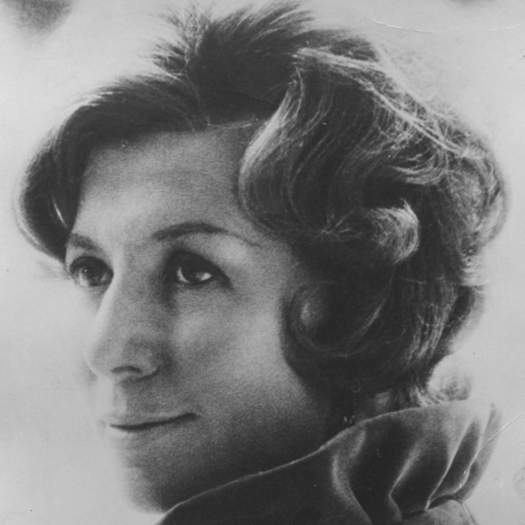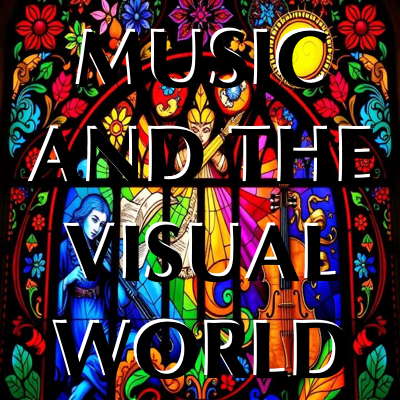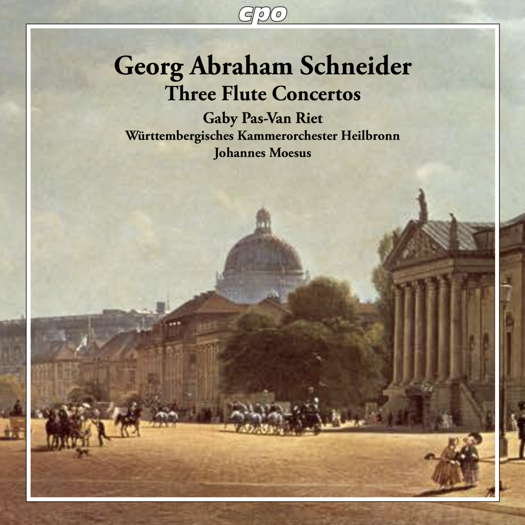 DISCUSSION: John Dante Prevedini leads a discussion about Composers, individuals or collective?, including contributions from David Arditti, Halida Dinova, Robert McCarney and Jane Stanley.
DISCUSSION: John Dante Prevedini leads a discussion about Composers, individuals or collective?, including contributions from David Arditti, Halida Dinova, Robert McCarney and Jane Stanley.
 SPONSORED: Think of Something Beautiful - Malcolm Miller pays tribute to contralto Sybil Michelow (1925-2013).
SPONSORED: Think of Something Beautiful - Malcolm Miller pays tribute to contralto Sybil Michelow (1925-2013).
All sponsored features >>
 DISCUSSION: John Dante Prevedini leads a discussion about Music and the Visual World, including contributions from Celia Craig, Halida Dinova and Yekaterina Lebedeva.
DISCUSSION: John Dante Prevedini leads a discussion about Music and the Visual World, including contributions from Celia Craig, Halida Dinova and Yekaterina Lebedeva.

Johann Abraham Schneider: Three Flute Concertos
555 390-2 (cpo, CD)
DDD
FIRST RELEASE (6 May 2022)
Playing time: 75'01"
Tracks: 9
Booklet pages: 20
℗ 2022 Classic Produktion Osnabrück
© 2022 Classic Produktion Osnabrück
Main country of recording: Germany
Country of manufacture: Germany
Reviewer: Gerald Fenech
Review of Johann Abraham Schneider: Three Flute Concertos published on 4 June 2022
Gaby Pas-Van Riet, flute
Württembergisches Kammerorchester Heilbronn
Johannes Moesus, conductor
Georg Abraham Schneider (1770-1839):
Concerto for Flute and Orchestra Op 53 in A minor
1 Allegro moderato
2 Adagio
3 Rondo. Allegretto
Concerto for Flute and Orchestra Op 12 in G
4 Allegro
5 Romance
6 Rondo
Concerto for Flute & Orchestra Op 63 in E minor
7 Allegro maestoso
8 Adagio
9 Allegro
Recorded 1-4 July 2020 at Flina Flein, Heilbronn, Baden-Württemberg, Germany.
Georg Abraham Schneider was born in Darmstadt in the same year as Beethoven. His musical talent became apparent at a very early age, and after an educational trip to Rheinsberg, he was engaged by Prince Heinrich of Prussia as a horn player for the Rheinsberg Chapel. The composer Schneider is a representative of the spirit of Haydn and Mozart, who wanted to be understood as their preserver. In the reviews, he was attested to compositional skill and a dignified artistry that was committed to the bourgeois taste of the time. Schneider wrote a remarkably large number of compositions for flute, including four flute concertos, about ninety flute duets and sixty quartets for flute and string trio. The charming, very light-hearted, three-movement Flute Concerto Op 12 is in classical concerto form, and the Mozart model is clearly audible. His Concerto Op 53 conforms to the classical scheme of the instrumental concerto, with ample opportunity for soloist Gaby Pas-Van Riet to display her virtuosity. The work charms with lovely delicate themes that offer the flute every opportunity toexplore the instrument's tonal spectrum. In the Concerto Op 63, printed in Leipzig in 1812, the orchestra is augmented with two trumpets and timpani in addition to the double instrumentation of oboes, bassoons and horns. Schneider here demonstrates his ability to orchestrate a concerto well and to use the winds effectively.

